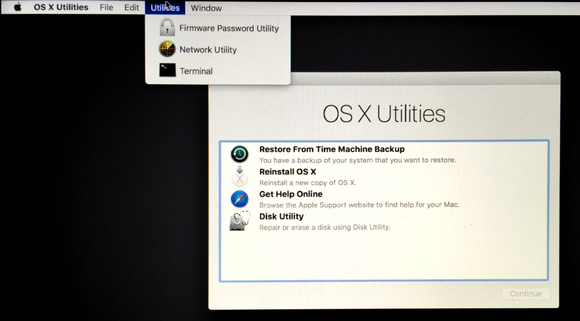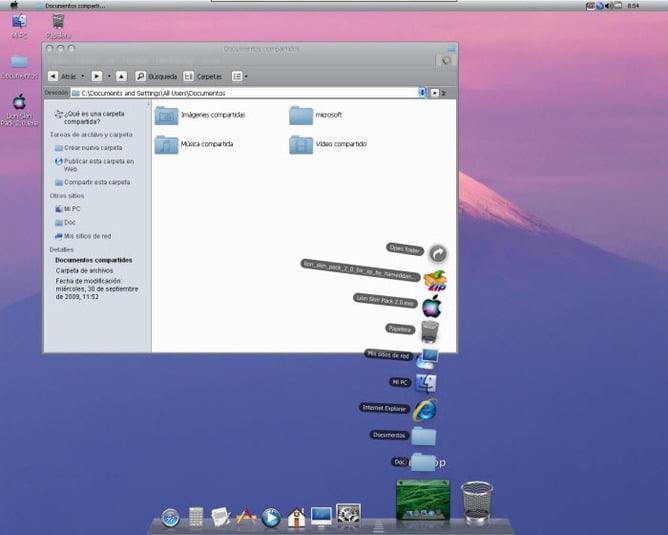Download OpenGL Extensions Viewer for macOS 10.9 or later and enjoy it on your Mac. Many OpenGL extensions, as well as extensions to related APIs like GLU, GLX, and WGL, have been defined by vendors and groups of vendors. There was a Mac OS 9, the last version of Mac OS before they moved to OS X. When OS X was first released machines would ship with it and a copy of Mac OS 9 (for compatibility with older software). That was affectionately known as 'Mac OS Classic'. So for veteran OS X users, calling it Mac OSX 9 can get pretty confusing;) – Andon M. It is commonly used as the primary graphics library of 3D games thanks to its cross-platform nature, which makes porting games easier. CAD programs, such as Blender and AutoCAD, also use OpenGL as their graphics library. Many GPUs, both dedicated and integrated, are optimized for OpenGL and is supported in nearly all modern systems.
- Opengl 3 0 free download - Virus Definitions for Norton AntiVirus 9.0/10.0/11.0 (PowerPC/Intel), Apple Mac OS Update 9.0.4, Microsoft Virtual PC for Mac 7.0.3 Update, and many more programs.
- 2,110 downloads; 188 KB; Plasma 10.4.1. A great screensaver module for Mac OS X. A OpenGL based screensaver for Mac OS X. Jul 28th 2012, 20:41 GMT. 4,445 downloads.
There are numerous Windowing system and interface libraries available for OpenGL as well as Scengraphs and High-level libraries build on top of OpenGL
- About GLUT
- GLUT is the OpenGL Utility Toolkit, a window system independent toolkit for writing OpenGL programs. It implements a simple windowing application programming interface (API) for OpenGL. GLUT makes it considerably easier to learn about and explore OpenGL Programming.
- Other GLUT-like Window System Toolkits
- Libraries that are modeled on the functionality of GLUT providing support for things like: windowing and events, user input, menuing, full screen rendering, performance timing
- About GLX, GLU & DRI
- GLX is used on Unix OpenGL implementation to manage interaction with the X Window System and to encode OpenGL onto the X protocol stream for remote rendering. GLU is the OpenGL Utility Library. This is a set of functions to create texture mipmaps from a base image, map coordinates between screen and object space, and draw quadric surfaces and NURBS. DRI is the Direct Rendering Infrastructure for coordinating the Linux kernel, X window system, 3D graphics hardware and an OpenGL-based rendering engine.
GLX, GLU and DRI
GLXLibrary
GLX 1.3 is used on Unix OpenGL implementation to manage interaction with the X Window System and to encode OpenGL onto the X protocol stream for remote rendering. It supports: pixel buffers for hardware accelerated offscreen rendering; read-only drawables for preprocessing of data in an offscreen window and direct video input; and FBConfigs, a more powerful and flexible interface for selecting frame buffer configurations underlying an OpenGL rendering window.
- Please refer to the OpenGL Registry for more information and links
GLU Library
GLU is the OpenGL Utility Library. This is a set of functions to create texture mipmaps from a base image, map coordinates between screen and object space, and draw quadric surfaces and NURBS. GLU 1.2 is the version of GLU that goes with OpenGL 1.1.
GLU 1.3 is available and includes new capabilities corresponding to new OpenGL 1.2 features.- Please refer to the OpenGL Registry for more information and links
Direct Rendering Infrastructure (DRI)
In simple terms, the DRI enables hardware-accelerated 3D graphics on Linux. More specifically, it's a software architecture for coordinating the Linux kernel, X window system, 3D graphics hardware and an OpenGL-based rendering engine.
- Higher Level Libraries built on OpenGL
- Leading software developers use OpenGL, with its robust rendering libraries, as the 2D/3D graphics foundation for higher-level APIs. Developers leverage the capabilities of OpenGL to deliver highly differentiated, yet widely supported vertical market solutions. Open Inventor, IRIS Performer, OpenGL Optimizer, OpenGL Volumizer, OpenGL Shader, Scene Graph APIs.
- Open Inventor® by VSG
- Open Inventor® by VSG is the commercial, current evolution of Open Inventor and provides an up-to-date, highly-optimized, full-featured implementation of the popular object-oriented scenegraph API for C++, .NET and Java. Applications powered by Open Inventor by VSG also benefit from powerful extensions such as VolumeViz LDM for very large volume data, MeshViz XLM for high-performance mesh support, or ScaleViz for multi-GPUs and immersive VR.
- OpenSceneGraph
- OSG is a open source high peformance 3D graphics toolkit, used by application developers in fields such as visual simulation, games, virtual reality, scientific visualization and modelling. Written entirely in Standard C++ and OpenGL it runs on all Windows platforms, OSX, Linux, IRIX, Solaris and FreeBSD operating systems.
- Quesa3D
- Quesa is a high level 3D graphics library, released as Open Source under the LGPL, which implements Apple's QuickDraw 3D API on top of OpenGL. It supports both retained and immediate mode rendering, an extensible file format, plug-in renderers, a wide range of high level geometries, hierarchical models, and a consistent and object-orientated API. Quesa currently supports Mac OS, Linux, and Windows - ports to Be and Mac OS X are in progress.
Home > Store
Register your product to gain access to bonus material or receive a coupon.
- By Robert P. Kuehne, J. D. Sullivan
- Published Dec 17, 2007 by Addison-Wesley Professional. Part of the OpenGL series.
Premium Website
- Sorry, this book is no longer in print.
Description
- Copyright 2008
- Edition: 1st
- Premium Website
- ISBN-10: 0-321-35652-7
- ISBN-13: 978-0-321-35652-9

The Mac has fully embraced OpenGL throughout its visual systems. In fact, Apple's highly efficient, modern OpenGL implementation makes Mac OS X one of today's best platforms for OpenGL development. OpenGL® Programming on Mac OS® X is the first comprehensive resource for every graphics programmer who wants to create, port, or optimize OpenGL applications for this high-volume platform.
Leading OpenGL experts Robert Kuehne and J. D. Sullivan thoroughly explain the Mac's diverse OpenGL APIs, both old and new. They illuminate crucial OpenGL setup, configuration, and performance issues that are unique to the Mac platform. Next, they offer practical, start-to-finish guidance for integrating key Mac-native APIs with OpenGL, and leveraging the full power of the Mac platform in your graphics applications.
Coverage includes
- A thorough review of Mac hardware and software architectures and their performance implications
- In-depth, expert guidance for accessing OpenGL from each of the Mac's core APIs: CGL, AGL, and Cocoa
- Interoperating with other Mac APIs: incorporating video with QuickTime, performing image effects with Core Image, and processing CoreVideo data
- Analyzing Mac OpenGL application performance, resolving bottlenecks, and leveraging optimizations only available on the Mac
- Detecting, integrating, and using OpenGL extensions
- An accompanying Web site (www.macopenglbook.com) contains the book's example code, plus additional OpenGL-related resources.
OpenGL® Programming on Mac OS® X will be valuable to Mac programmers seeking to leverage OpenGL's power, OpenGL developers porting their applications to the Mac platform, and cross-platform graphics developers who want to take advantage of the Mac platform's uniquely intuitive style and efficiency.

Extras
Related Article
Sample Content
Online Sample Chapter
Downloadable Sample Chapter

Table of Contents
List of Figures xv
List of Tables xix
List of Examples xxi
Preface xxv
Acknowledgments xxix
About the Authors xxxi
Chapter 1: Mac OpenGL Introduction 1
- Why the Mac? 2
Why OpenGL? 3
The Book 4
Chapter 2: OpenGL Architecture on OS X 7
- Overview 7
About OpenGL 7
OpenGL Feature Support 14
API Layers 15
The Mac OS OpenGL Plug-In Architecture 17
Renderers 18
Summary 21
Mac Os Opengl Version
Chapter 3: Mac Hardware Architecture 23
Opengl 2.0 Mac Os X Download
- Overview 23
Data Flow and Limitations 24
Summary 32
Chapter 4: Application Programming on OS X 33
- Overview 33
Mac OS X Versions 33
System Configuration 34
Power Management 34
Filesystem 38
Finding, Verifying, and Filing Bugs 39
Threading 41
Data Parallel Computation: SIMD 42
Chapter 5: OpenGL Configuration and Integration 45
- API Introductions and Overview 46
Configuration API Relationships 49
Chapter 6: The CGL API for OpenGL Configuration 55
- Overview 55
Error Handling 57
Pixel Format Selection 57
Context Management 63
Drawables 77
Using CGL Macros 86
Summary 86
Chapter 7: The AGL API for OpenGL Configuration 89
- Overview 89
Software Layering 90
Pixel Format and Context 91
Additional Topics 104
Alternative Rendering Destinations 109
Summary 120
Chapter 8: The Cocoa API for OpenGL Configuration 121
- Overview 122
NSOpenGLView 122
NSView 133
Additional Topics 140
Alternative Rendering Destinations 152
Summary 162


Chapter 9: The GLUT API for OpenGL Configuration 163
- Overview 164
Configuration and Setup 165
Summary 171
Chapter 10: API Interoperability 173
- Overview 173
Cocoa Image: NSImage 174
QuickTime 184
Summary 193
Chapter 11: Performance 195
- Overview 195
Axioms for Designing High-Performance OpenGL Applications 196
OpenGL for Mac OS X Rules of Thumb for Performance 201
Metrics 207
Efficient Data Management Using Mac OpenGL 209
Efficient Handling of Vertex Data 210
Efficient Handling of Texture Data 221
Textures 225
Shaders 226
Tools 226
Graphics Tools 228
Putting It All Together 237
Summary 243
Chapter 12: Mac Platform Compatibility 245
- Mac OS Versions 245
OpenGL Platform Identification 248
Mac OS Version Identification 249
Summary 251
Chapter 13: OpenGL Extensions 253
- Overview 253
Extension Design and API Integration 254
Extension Styles and Types 256
Identification, Selection, Query, and Usage 257
Utilization and Binding 262
Extension Management Libraries 269
Summary 275
Appendix A: X11 APIs for OpenGL Configuration 277
Mac Os X El Capitan Download
- Installation 277
Building X11 Applications on OS X 278
X11 Color Models 279
Appendix B: Glossary 281
Appendix C: The Cocoa API for OpenGL Configuration in Leopard, Mac OS X 10.5 283
Opengl For Mac Os
- Overview 284
NSOpenGLView 284
NSView 294
Additional Topics 300
Alternative Rendering Destinations 312
Summary 322
Appendix D: Bibliography 323
Index 325
Preface
Index
More Information
Other Things You Might Like
Mac Os Opengl Support
- Book $47.99
- Book $47.99
Opengl For Mac Os X Download Windows 7
- Web Edition $38.39
